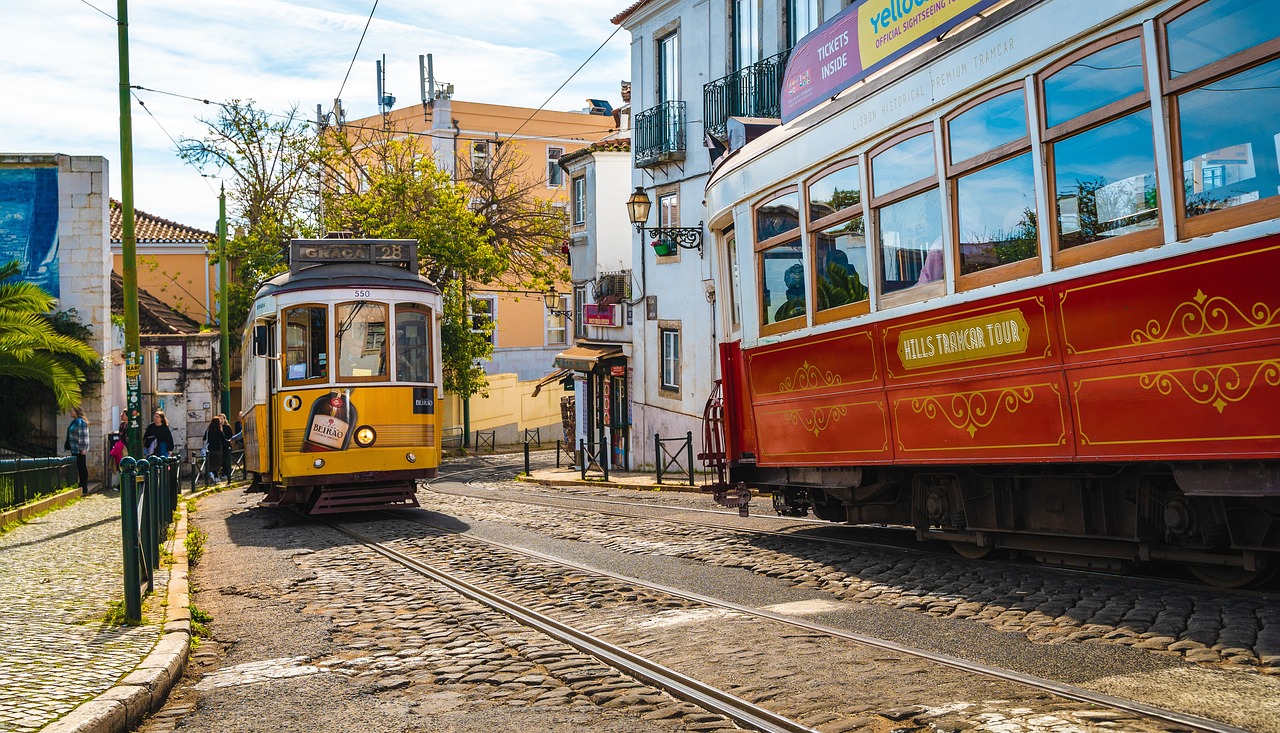Table of Contents
- The Current State of Urban Transportation
- The Expanding Reach of Metro Networks
- Rapid Transit
- Reduced Carbon Footprint
- Accessibility
- Urban Redevelopment
- Reduced Congestion
- Emerging Trends Shaping the Future
- Automation and Driverless Trains
- Integration with Other Modes
- Sustainability Initiatives
- Smart Ticketing and Mobility Apps
- Expansion into Suburbs
The future of commuting is being reshaped by the rapid urbanization of our planet. As cities grow and traffic congestion worsens, the need for efficient, sustainable and accessible transportation becomes increasingly vital. Urban rail systems and metro networks are emerging as transformative solutions that not only address the challenges of today but also promise a brighter, more sustainable future for urban commuters.
The future of commuting is being fundamentally redefined by the relentless urbanization of our world’s population. As more people flock to cities, the challenges of congestion, pollution and inefficient transportation systems become ever more apparent. In response to these pressing issues, urban rail systems and metro networks are emerging as indispensable pillars of sustainable urban development, offering multifaceted benefits that extend far beyond just easing traffic woes.
Reliable Mobility: In rapidly expanding cities, urban rail systems and metro networks provide a reliable and efficient mode of transportation. Commuters can count on consistent schedules and shorter travel times, reducing the stress and unpredictability associated with traditional road-based commuting. This reliability, in turn, encourages more people to choose public transit over private cars, ultimately reducing traffic congestion.
Environmental Sustainability: The environmental impact of these systems cannot be overstated. Urban rail networks are usually powered by electricity, often sourced from renewable energy, making them a significantly greener option compared to the individual combustion engines of cars. By reducing the number of vehicles on the road, these systems contribute to lowering air pollution and greenhouse gas emissions, fostering cleaner and healthier urban environments.
Economic Efficiency: As cities expand, so does the cost of building and maintaining road infrastructure. Urban rail and metro networks offer a more cost-effective alternative. While the initial construction may be an investment, these systems can alleviate the need for constant road expansion, saving cities money in the long run. Additionally, efficient public transit can lead to increased economic productivity as people spend less time stuck in traffic.
Accessibility and Inclusivity: These systems promote inclusivity by providing accessible transportation for individuals of all ages and abilities. They reduce the barriers to mobility for people who cannot drive, whether due to age, disability or economic constraints, ensuring that everyone can access jobs, education and essential services within the city.
Urban Planning and Development: Urban rail systems often drive urban development around transit hubs, fostering vibrant, mixed-use communities. This transit-oriented development encourages walkability, reduces urban sprawl and maximizes land use efficiency. It can also lead to increased property values, which can, in turn, generate revenue for city improvements and services.
Reduced Traffic Congestion: By offering an attractive alternative to personal vehicles, urban rail systems and metro networks alleviate traffic congestion, which not only reduces travel times but also minimizes the negative economic and environmental impacts associated with gridlock.
Safety and Reduced Accidents: Public transit systems are generally safer than private cars. They reduce the number of vehicles on the road, decreasing the likelihood of accidents. Moreover, transit vehicles are typically equipped with advanced safety features and adhere to strict maintenance schedules.
In essence, urban rail systems and metro networks are the linchpins of a sustainable and efficient urban future. They not only address the immediate challenges posed by urbanization but also provide a solid foundation for cities to grow in a sustainable and environmentally responsible manner. As cities continue to expand, these transit solutions will play an increasingly vital role in shaping the way we live, commute and interact with our urban environments, ultimately contributing to more livable and resilient cities.
Looking for more insights? You’ll find them right here in our extended coverage: Transportation Patterns and Problems of People with Disabilities …
The Current State of Urban Transportation
Urban areas worldwide are grappling with mounting transportation challenges. Traffic gridlock, air pollution and the strain on road infrastructure are becoming ever more apparent. In response, forward-thinking cities are turning to comprehensive urban rail systems and metro networks to provide reliable, convenient and eco-friendly transportation options.
Urban areas worldwide are grappling with mounting transportation challenges that are increasingly pressing and complex. The issues of traffic gridlock, air pollution and the deteriorating condition of road infrastructure have become glaring and urgent concerns. In response, forward-thinking cities are proactively seeking innovative solutions to alleviate these problems and pave the way for a more sustainable and efficient urban future.
One of the most transformative solutions gaining traction in these urban centers is the development and expansion of comprehensive urban rail systems and metro networks. These systems offer a multifaceted approach to address the pressing issues faced by urban areas:
Reliable Transportation: Urban rail systems provide a dependable mode of transportation that is less susceptible to traffic congestion and disruptions. Commuters can rely on the regularity and consistency of metro services, reducing the stress associated with unpredictable travel times.
Convenience: Metro networks offer a convenient and user-friendly mode of transit. Passengers can seamlessly connect between various parts of the city without the hassle of navigating congested streets or dealing with parking issues. This encourages more people to choose public transportation over private vehicles.
Eco-Friendly Transit: Urban rail systems are inherently eco-friendly. They run on electricity, reducing the reliance on fossil fuels and helping to combat air pollution and greenhouse gas emissions. This aligns with global efforts to combat climate change and improve urban air quality.
Economic Benefits: The construction and maintenance of urban rail systems create jobs and stimulate economic growth. Additionally, these systems can increase property values and encourage economic development around transit hubs, fostering thriving urban centers.
Traffic Relief: By diverting a significant portion of commuters from private vehicles to public transit, urban rail systems can help alleviate traffic gridlock. This not only reduces congestion but also enhances overall road safety and reduces wear and tear on infrastructure.
Accessibility and Inclusivity: Metro networks are often designed with accessibility in mind, ensuring that people of all abilities can use public transportation. This promotes social inclusivity and ensures that everyone can participate in urban life.
Sustainable Urban Planning: The introduction of urban rail systems often leads to more sustainable urban planning. Cities are encouraged to develop transit-oriented development (TOD), where residential, commercial and recreational areas are strategically located around transit stations, reducing the need for long commutes.
As cities continue to grow and urbanization accelerates, investing in modern and efficient urban rail systems becomes not only a practical solution to transportation challenges but also a visionary step toward creating more livable, environmentally friendly and economically prosperous urban environments. These systems represent a commitment to sustainable urban development, improved quality of life for residents and a more promising future for generations to come.
Looking for more insights? You’ll find them right here in our extended coverage: Urban Rail Transit Present Situation and Future Development …

The Expanding Reach of Metro Networks
Metro networks, also known as subways or underground railways, have long been a staple of major cities. However, their reach and capabilities are expanding rapidly. Cities are investing in new metro lines, extensions and modernization projects to provide greater coverage and accessibility to previously underserved areas.
Metro networks, often synonymous with the heartbeat of bustling metropolises, are undergoing a remarkable transformation that goes beyond merely expanding their reach and capabilities. In a world increasingly focused on sustainability, urbanization and efficient transportation, these subterranean arteries are poised to play an even more pivotal role in shaping the future of cities.
Green Mobility and Sustainability: As cities grapple with the challenges of congestion and environmental sustainability, metro networks are emerging as a key solution. Many metropolitan areas are shifting towards electric or hybrid metro systems to reduce greenhouse gas emissions and dependence on fossil fuels. These eco-friendly initiatives not only reduce the carbon footprint of public transportation but also set an example for other modes of transit.
Integration with Other Modes of Transport: The modernization of metro networks extends beyond just the underground lines. Cities are increasingly focusing on creating seamless transportation ecosystems by integrating metro systems with other modes of transit, such as buses, trams, bicycles and ride-sharing services. This intermodal connectivity enhances accessibility and encourages people to use public transportation for their entire journey.
Accessibility and Inclusivity: Beyond expansion, cities are paying close attention to ensuring that metro networks are accessible to everyone, including individuals with disabilities and those living in underserved areas. Stations are being retrofitted with ramps, elevators, tactile paving and other amenities to ensure that public transportation is inclusive and convenient for all residents.
Smart Technologies: Metro networks are embracing smart technologies to enhance safety, efficiency and user experience. Automated fare collection, real-time passenger information systems and predictive maintenance are becoming standard features. These technologies not only make metro travel more convenient but also help cities manage their transportation systems more effectively.
Urban Redevelopment: The construction and expansion of metro lines often trigger urban redevelopment projects in previously neglected or underdeveloped areas. This not only improves the quality of life for residents but also revitalizes local economies by attracting businesses and investment.
Reducing Traffic Congestion: Expanding metro networks helps alleviate traffic congestion, reducing the time and stress of commuting for residents. By offering a reliable alternative to private car travel, metros help decrease the number of vehicles on the road, leading to cleaner air and improved overall traffic flow.
Economic Benefits: Investments in metro networks often result in significant economic benefits for cities. Improved transportation infrastructure can attract businesses, tourists and new residents, stimulating economic growth and creating job opportunities.
Resilience and Disaster Preparedness: In an era marked by the increasing frequency of extreme weather events and natural disasters, underground metro networks offer a lifeline for cities. They provide a reliable mode of transportation during emergencies and serve as evacuation routes when necessary.
In conclusion, metro networks are no longer confined to simply connecting one part of a city to another. They are evolving into multifaceted urban solutions that address pressing issues such as sustainability, accessibility and congestion. As cities continue to invest in these vital transit systems, they are not only expanding their physical reach but also reshaping the way people live, work and move within urban landscapes. Metro networks are becoming the backbone of resilient, sustainable and inclusive cities of the future.
Looking for more insights? You’ll find them right here in our extended coverage: How to make public transport an attractive option in your city

Rapid Transit
Metro systems are known for their speed and reliability. Commuters can navigate cities swiftly, bypassing congested streets and unpredictable traffic.
“Metro systems, renowned for their efficiency, have become lifelines for urban commuters around the world. These subterranean networks offer a multitude of benefits that extend far beyond mere speed and reliability, fundamentally reshaping the way people experience and interact with their cities.
Urban Lifelines: Metro systems are the arteries of modern cities, breathing life into their daily rhythms. They provide essential connectivity, linking residential areas with commercial hubs, educational institutions, healthcare facilities and cultural attractions. This accessibility transforms urban living, offering convenience and choice in how people navigate their metropolises.
Traffic Relief: The ability to bypass congested streets and unpredictable traffic is a game-changer for commuters. It not only saves time but also reduces stress, making daily journeys more predictable and manageable. This relief from traffic congestion also has environmental benefits, as it contributes to reducing emissions and air pollution.
Economic Productivity: Metro systems bolster economic productivity by streamlining daily commutes. They enable workers to access job opportunities more efficiently, fostering a dynamic labor market and contributing to a city’s economic growth. Businesses benefit from a larger and more accessible talent pool.
Energy Efficiency: Metro systems are environmentally friendly modes of transportation. They are highly energy-efficient, consuming less energy per passenger-kilometer than many other forms of transportation. This efficiency reduces a city’s carbon footprint and helps combat climate change.
Social Inclusion: Metro systems promote social inclusion by offering affordable transportation options for all income groups. They bridge geographic divides, ensuring that residents from diverse backgrounds have access to education, healthcare and employment opportunities. This inclusivity fosters a more equitable urban society.
Cultural and Educational Hubs: Metro stations often serve as gateways to cultural and educational hubs. Museums, theaters, universities and historic landmarks are frequently located near metro stations, making them easily accessible to residents and visitors. This proximity enriches cultural life and educational experiences.
Safety and Security: Metro systems are known for their safety and security measures. Surveillance, well-lit stations and a strong presence of personnel contribute to passenger confidence. These factors make metro travel not only efficient but also secure, even during late hours.
Reduction in Road Congestion: The use of metro systems helps reduce road congestion, benefiting not only metro commuters but also those who rely on roads for transportation. Reduced traffic congestion leads to shorter travel times for everyone and contributes to smoother traffic flow.
Technological Advancements: Metro systems continue to evolve with technological advancements. Innovations such as contactless ticketing, real-time information apps and automated train operations enhance the overall commuter experience, making metro travel even more convenient.
Future-Ready Infrastructure: Metro systems are an investment in the future. They lay the groundwork for sustainable, efficient and resilient urban transportation. As cities grow and evolve, metro systems can adapt and expand to meet the changing needs of their populations.
In essence, metro systems are not merely modes of transportation; they are transformative forces that shape the very fabric of urban life. They redefine how cities function, providing accessibility, connectivity and sustainability. As cities continue to grow and evolve, metro systems will play an increasingly vital role in fostering vibrant, inclusive and efficient urban environments.”
Additionally, you can find further information on this topic by visiting this page: How to make public transport an attractive option in your city

Reduced Carbon Footprint
Electric metro systems produce fewer emissions than traditional vehicles, contributing to cleaner air and a more sustainable urban environment.
The shift towards electric metro systems represents a significant milestone in the journey toward a greener, more sustainable urban environment. These systems offer a multitude of benefits that extend far beyond reduced emissions, making them a cornerstone of eco-friendly urban transportation.
Cleaner Air and Reduced Pollution: Electric metro systems are powered by electricity, which can be generated from cleaner sources like renewables or nuclear energy. This makes them a low-emission mode of transportation, reducing harmful pollutants such as carbon dioxide (CO2), nitrogen oxides (NOx) and particulate matter. As a result, urban air quality improves, benefiting the health and well-being of city residents.
Noise Reduction: Electric trains are quieter than their diesel or gasoline counterparts, significantly reducing noise pollution in urban areas. This quieter mode of transportation contributes to a more peaceful and livable urban environment, with fewer disruptions to communities along rail lines.
Energy Efficiency: Electric metro systems are highly energy-efficient. Regenerative braking systems, for example, capture and reuse energy during deceleration, further reducing overall energy consumption. The energy efficiency of these systems helps cities conserve resources and reduce their carbon footprint.
Reduction in Traffic Congestion: As electric metro systems provide an efficient alternative to private car usage, they contribute to a reduction in traffic congestion. Fewer vehicles on the road lead to shorter commute times, less idling in traffic and lower overall energy consumption, further benefiting the environment.
Promotion of Sustainable Urban Planning: The presence of electric metro systems often influences urban planning and development. Transit-oriented development (TOD) is a strategy that encourages mixed-use, higher-density development around metro stations. This approach reduces the need for long commutes and encourages walking, cycling and the use of public transportation, thereby reducing car dependency and lowering emissions.
Resilience to Fuel Price Volatility: Electric metro systems are less susceptible to fluctuations in fuel prices compared to systems reliant on fossil fuels. This stability ensures consistent and predictable operating costs, which can be advantageous for both operators and commuters.
Positive Social Impact: A shift to electric metro systems promotes a sense of social responsibility and environmental consciousness. Commuters who choose these eco-friendly options contribute to the broader sustainability goals of their cities and nations, fostering a sense of collective commitment to environmental stewardship.
In conclusion, electric metro systems are integral to creating cleaner, more sustainable urban environments. Beyond their role in reducing emissions, these systems bring numerous advantages, including noise reduction, energy efficiency, reduced congestion and the promotion of eco-friendly urban planning. As cities around the world continue to expand and modernize their metro networks, they are taking significant steps towards achieving a more sustainable and environmentally responsible future.
Additionally, you can find further information on this topic by visiting this page: Uncovering the Carbon Emission Intensity and Reduction Potentials …

Accessibility
Metro networks prioritize accessibility for all commuters, including those with disabilities, making urban transportation more inclusive and equitable.
Metro networks represent a shining example of urban transportation systems that prioritize accessibility for all commuters, including those with disabilities. This commitment to inclusivity and equity not only transforms the daily lives of disabled individuals but also contributes to the overall social and economic vibrancy of cities.
One of the most visible ways in which metro networks prioritize accessibility is through the construction of fully accessible stations. These stations feature ramps, elevators and tactile paving to assist individuals with mobility challenges, ensuring they can navigate the metro system with ease. Moreover, well-designed platforms and boarding areas accommodate wheelchairs, walkers and strollers, eliminating barriers to entry and exit.
Additionally, metro networks invest in state-of-the-art technologies such as audio and visual announcements. These systems aid commuters with visual or hearing impairments by providing real-time information about train arrivals, departures and station stops. This ensures that no one is left in the dark and empowers all passengers to make informed travel decisions independently.
The interior of metro trains is another realm of accessibility innovation. Priority seating for individuals with disabilities, seniors and pregnant passengers is a common feature. Furthermore, securement areas for wheelchairs and mobility aids are strategically placed and onboard staff are trained to provide assistance when needed. All these efforts create a supportive environment where everyone can travel comfortably and safely.
Moreover, metro networks often offer reduced fares or special cards for disabled passengers, recognizing the economic challenges that many of them face. These initiatives reduce the financial burden of transportation, enabling individuals with disabilities to participate more fully in urban life, whether it’s commuting to work, attending cultural events or enjoying recreational activities.
Beyond physical infrastructure and fare policies, metro networks actively engage with disability advocacy groups and organizations to continually improve accessibility standards. They solicit feedback from disabled passengers and use this input to inform future design and policy decisions. This collaborative approach ensures that accessibility initiatives remain relevant and responsive to the evolving needs of the disabled community.
The commitment to accessibility extends to emergency preparedness as well. Metro networks develop comprehensive plans to ensure the safe evacuation of disabled passengers in case of emergencies. These plans include the training of metro staff and the installation of emergency communication systems to assist individuals with disabilities during crises.
In conclusion, metro networks stand as beacons of inclusivity and equity in urban transportation. By prioritizing accessibility in their infrastructure, services and policies, they create a more inclusive and equitable urban environment. This not only benefits disabled commuters but enriches the cultural, social and economic fabric of cities, making them more vibrant and welcoming for all residents and visitors alike. The commitment to accessibility is not just about transportation; it’s a testament to a city’s dedication to embracing diversity and ensuring that every individual can fully participate in city life.
For a comprehensive look at this subject, we invite you to read more on this dedicated page: Urban Rail Transit Present Situation and Future Development …
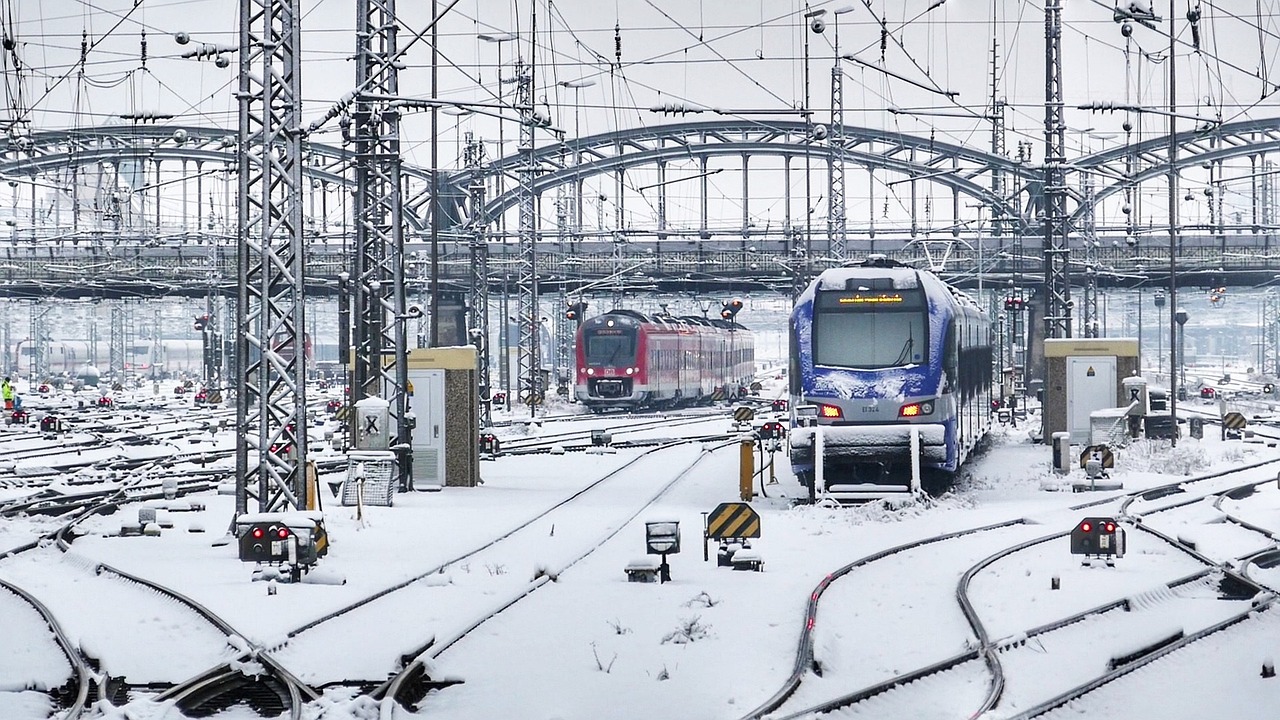
Urban Redevelopment
Metro stations often serve as catalysts for urban redevelopment, spurring economic growth and revitalizing neighborhoods surrounding transit hubs.
Metro stations hold a unique position within urban landscapes, far beyond their primary function of facilitating transportation. These transit hubs are instrumental catalysts for urban redevelopment, exerting a profound influence on the cities they serve. One of the most remarkable impacts of metro stations is their ability to ignite economic growth and breathe new life into neighborhoods that envelope these vital nodes of connectivity.
As city centers expand and evolve, metro stations become focal points for development and regeneration. Their strategic locations make them natural magnets for commercial and residential activity. The convenience of easy access to public transportation lures businesses, investors and residents alike. New shops, restaurants and services spring up, transforming once-neglected areas into vibrant, bustling districts.
The effect of metro stations on property values is particularly striking. Properties in proximity to these transit hubs often experience a significant increase in value. The demand for real estate close to well-connected metro stations creates a competitive market, spurring investment in infrastructure and housing developments. This not only boosts property values but also generates tax revenue for local governments, which can be reinvested in further urban improvements.
Moreover, metro stations play a pivotal role in reducing traffic congestion and air pollution. As more people choose public transportation, there is a corresponding reduction in the number of vehicles on the road. This not only leads to cleaner air but also lessens the strain on road networks, resulting in smoother traffic flow throughout the city.
The revitalization of neighborhoods around metro stations extends beyond economic growth. It fosters a sense of community and enhances the overall quality of life for residents. Access to public transit encourages walking and cycling, promoting healthier, more active lifestyles. Public spaces around these hubs often undergo beautification efforts, creating inviting places for people to gather and socialize.
In essence, metro stations are not just transportation hubs; they are engines of progress and transformation within cities. Their ability to stimulate economic activity, increase property values, reduce environmental impact and enhance the urban experience underscores their vital role in shaping the modern metropolis. As cities continue to grow and evolve, the impact of these transit hubs will remain a key driver of urban redevelopment and the well-being of communities for generations to come.
Should you desire more in-depth information, it’s available for your perusal on this page: Urban commuting dynamics in response to public transit upgrades …
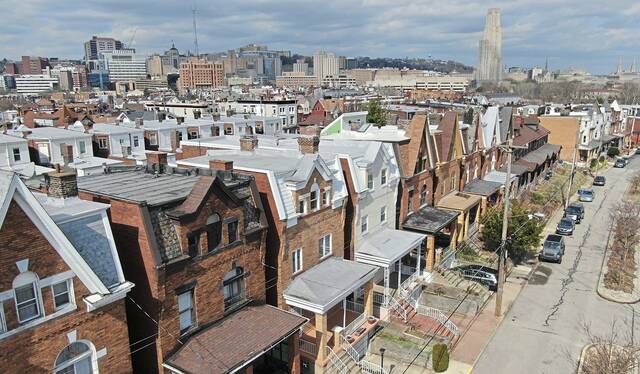
Reduced Congestion
As more people opt for metro travel, the strain on road networks decreases, reducing overall traffic congestion and travel times.
The shift towards metro travel carries numerous benefits that extend beyond the convenience and efficiency of urban transportation. This transition to metro systems not only enhances the daily commute for individuals but also has far-reaching positive impacts on the entire urban landscape. Let’s explore how metro travel alleviates traffic congestion and improves travel times in more detail:
“As an increasing number of commuters opt for metro travel, the positive effects ripple through urban infrastructure, leading to reduced strain on road networks. The resultant decrease in traffic congestion not only contributes to more efficient travel but also unlocks several wider benefits for both urban residents and the environment.”
Efficient Use of Space: Metro systems are renowned for their space efficiency. By transporting large numbers of passengers underground, they free up valuable surface space that would otherwise be occupied by traffic lanes and parking lots. This repurposed space can be utilized for green areas, cycling lanes or pedestrian zones, enhancing the overall quality of urban life.
Reduction in Road Traffic: As more people embrace metro travel as their primary mode of urban transportation, the number of vehicles on the road decreases. This reduction in road traffic leads to smoother and less congested streets, resulting in shorter travel times for those who rely on automobiles.
Environmental Benefits: Fewer vehicles on the road translate to decreased emissions, contributing to improved air quality and reduced pollution levels in urban areas. Metro systems are generally powered by electricity, which can be sourced from cleaner and more sustainable energy options, further reducing the carbon footprint of urban transportation.
Reliable Schedules: Metro systems often operate on fixed schedules with minimal disruptions. This predictability is a stark contrast to road travel, which can be plagued by unexpected delays due to traffic jams or accidents. Metro commuters can plan their journeys with greater certainty, ensuring punctuality and reduced travel times.
Economic Advantages: Decreased traffic congestion and improved travel times lead to increased productivity and cost savings for businesses and individuals. Efficient transportation networks enable employees to reach their workplaces more reliably and enable businesses to optimize their logistics.
Stress Reduction: The frustrations of daily traffic congestion can take a toll on commuters’ mental well-being. Opting for metro travel provides a more relaxed and stress-free commute, contributing to a higher quality of life for urban residents.
Public Transport Expansion: The success of metro systems often encourages further investment in public transportation infrastructure. This expansion includes the development of additional metro lines, bus rapid transit (BRT) systems and integrated transportation networks, providing even more alternatives to road travel.
Accessibility for All: Metro systems are generally designed to be accessible to people of all ages and physical abilities. This inclusivity encourages a broader spectrum of the population to choose public transportation, further reducing the number of private vehicles on the road.
In conclusion, the choice to embrace metro travel has a transformative effect on urban mobility and quality of life. It not only alleviates traffic congestion and improves travel times but also promotes sustainability, reduces emissions and enhances the overall livability of urban environments. As cities continue to grow, investing in efficient and accessible public transportation, including metro systems, remains a crucial step towards a more sustainable and vibrant future.
To delve further into this matter, we encourage you to check out the additional resources provided here: THE ROLE OF URBAN RAIL IN A SUSTAINABLE AFRICA

Emerging Trends Shaping the Future
Several trends are shaping the future of urban rail systems and metro networks:
Several trends are shaping the future of urban rail systems and metro networks, ushering in an era of unprecedented innovation and efficiency. These transformative forces encompass various aspects, such as technology integration, sustainability initiatives, urbanization patterns and passenger experience enhancements. Together, they promise to redefine the way cities move, connect and evolve in the coming years, setting the stage for more accessible, eco-friendly and interconnected urban transportation systems.
To expand your knowledge on this subject, make sure to read on at this location: Beyond Traffic 2045

Automation and Driverless Trains
Automation technology is revolutionizing metro networks by enabling the deployment of driverless trains. These systems enhance safety, efficiency and capacity.
Automation technology is spearheading a transformative shift within metro networks, ushering in an era of driverless trains that promise to redefine urban transportation. These state-of-the-art systems not only augment safety, efficiency and capacity but also usher in a new era of convenience and sustainability. By eliminating the need for human drivers, they reduce the risk of human error, making metro travel even safer. Furthermore, they optimize train schedules and routes, increasing operational efficiency and reducing delays. This, in turn, results in greater capacity, allowing more passengers to enjoy swift and reliable commutes.
Moreover, the adoption of automation technology aligns with broader efforts to make public transportation greener. Driverless trains can be designed to run on cleaner energy sources, reducing the carbon footprint of metro networks. Additionally, by optimizing speed and braking patterns, they contribute to energy efficiency and lower overall operational costs.
In essence, the integration of automation technology into metro networks represents a multifaceted revolution, not only elevating safety, efficiency and capacity but also aligning with sustainability goals and enhancing the overall urban commuting experience. As these systems continue to evolve, they hold the potential to transform the way we perceive and interact with public transportation systems, ultimately benefiting both passengers and the environment.
For additional details, consider exploring the related content available here Autonomous mobility: The future of rail is automated | Alstom
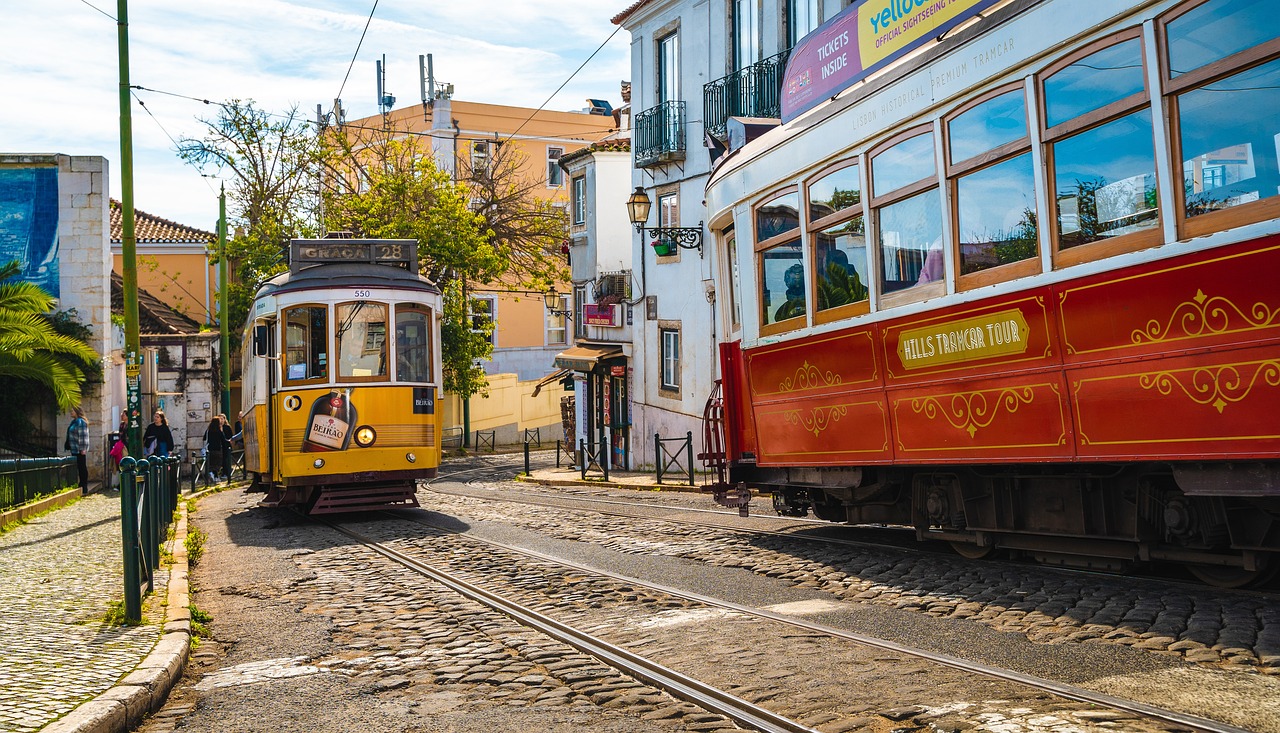
Integration with Other Modes
Future urban transportation will involve seamless integration between metro systems, buses, trams, cycling and even shared mobility services like ride-sharing and electric scooters. This multimodal approach offers flexibility and convenience to commuters.
Future urban transportation will involve seamless integration between metro systems, buses, trams, cycling and even shared mobility services like ride-sharing and electric scooters. This multimodal approach offers flexibility and convenience to commuters, ushering in a new era of sustainable, efficient and user-centric city mobility.
One of the key benefits of this integrated urban transportation model is the reduction of traffic congestion and its associated problems, such as pollution and time wasted in gridlock. By offering various options for commuters to choose from, cities can encourage people to leave their cars at home, thus alleviating traffic pressures. Imagine a commuter seamlessly transitioning from their neighborhood tram to a shared electric scooter, effortlessly covering the last mile to their destination. This not only reduces the number of private vehicles on the road but also contributes to cleaner air and a quieter urban environment.
Moreover, this multimodal approach promotes accessibility and inclusivity within cities. It ensures that people of all ages and physical abilities can access public transportation, making cities more livable and connected. Bicycle lanes, wheelchair-friendly trams and well-designed shared mobility services cater to diverse needs, creating an inclusive transportation network that serves everyone.
Safety is another paramount concern in urban transportation and the integration of various modes helps enhance it. Collision avoidance systems, advanced traffic management and real-time data sharing between different transportation systems enable better coordination and reduce the risk of accidents. Commuters can confidently switch between modes knowing that their safety is a top priority.
From an environmental standpoint, multimodal urban transportation aligns with sustainability goals. Reduced car usage means decreased carbon emissions, which is crucial for combating climate change. Encouraging cycling and walking also promotes healthier and more active lifestyles, contributing to both individual well-being and the overall health of the community.
Furthermore, this integrated approach to urban transportation opens up opportunities for smart city initiatives. Data collected from different modes can be used to optimize traffic flow, improve public transportation schedules and enhance the overall urban experience. Cities can harness technology to create efficient, data-driven transportation systems that adapt to changing needs and demands.
In summary, the future of urban transportation is a harmonious blend of metro systems, buses, trams, cycling lanes, ride-sharing and electric scooters. This multimodal approach is a testament to our commitment to building cleaner, safer, more accessible and more sustainable cities. By seamlessly connecting various transportation options, we are not only reducing the burden of traffic congestion but also enhancing the quality of life for city dwellers, fostering a greener environment and paving the way for smarter, more connected urban communities.
Explore this link for a more extensive examination of the topic: Smart Urban Transit Systems: From Integrated Framework to …

Sustainability Initiatives
Cities are increasingly focusing on sustainability, incorporating eco-friendly features into metro network design, such as energy-efficient trains, regenerative braking systems and solar-powered stations.
Cities are increasingly focusing on sustainability, recognizing the pivotal role of metro networks in reducing environmental impact and enhancing the quality of urban life. This commitment to sustainability extends beyond mere rhetoric, with cities actively incorporating eco-friendly features into their metro network design to create a more sustainable and resilient urban future.
Energy-Efficient Trains: One of the primary drivers of sustainability in metro systems is the adoption of energy-efficient trains. Modern metro carriages are designed to maximize energy efficiency, reducing power consumption per passenger mile. These trains often incorporate lightweight materials, improved aerodynamics and regenerative braking systems to capture and reuse energy, further minimizing their environmental footprint.
Regenerative Braking Systems: Regenerative braking systems are a remarkable innovation within metro networks. When a train brakes, these systems convert the kinetic energy into electrical energy, which can be reused or fed back into the grid. This not only reduces energy consumption but also decreases wear and tear on braking components, leading to lower maintenance costs and a longer lifespan for the trains.
Solar-Powered Stations: Sustainable metro networks often feature solar-powered stations. Solar panels installed on station rooftops and other suitable areas harness the power of the sun to generate electricity. This renewable energy source not only provides electricity to the stations but also reduces the overall carbon footprint of the metro system. Excess energy generated can even be redirected to power nearby facilities or contribute to the city’s energy grid.
Efficient Lighting and Ventilation: Sustainable metro design extends to the efficient use of resources within stations and trains. LED lighting is commonly employed, reducing energy consumption compared to traditional lighting. Additionally, intelligent ventilation systems are employed to maintain comfortable temperatures while minimizing energy use. These innovations contribute to both sustainability and passenger comfort.
Integration with Public Transport: Promoting sustainability often involves creating an integrated public transportation system. Metro networks are designed to seamlessly connect with other modes of public transport, such as buses, trams and cycling infrastructure. This encourages a shift away from private vehicle usage, reducing congestion and emissions while promoting a more sustainable urban mobility ecosystem.
Green Initiatives and Landscaping: Some cities are going further by incorporating green initiatives and landscaping into their metro networks. This may involve planting trees and greenery at station entrances and along tracks to enhance air quality and aesthetics. These green elements not only contribute to sustainability but also create more inviting public spaces.
Waste Reduction and Recycling: Sustainability in metro systems extends to waste reduction and recycling efforts. Cities implement recycling programs within stations, encouraging passengers to dispose of waste responsibly. Additionally, efforts are made to reduce single-use plastics and promote eco-friendly practices throughout the metro network.
In summary, the evolution of metro networks toward sustainability represents a transformative shift in urban transportation. Cities are embracing eco-friendly features, such as energy-efficient trains, regenerative braking and solar power, to create more sustainable and environmentally responsible metro systems. These efforts not only reduce environmental impact but also enhance the quality of life for urban residents by providing efficient, eco-conscious transportation options.
For a comprehensive look at this subject, we invite you to read more on this dedicated page: METRONext Moving Forward Plan | ADA Accessible Public Transit …
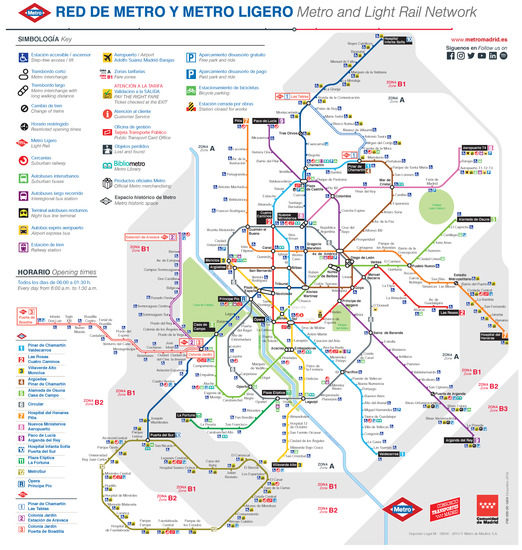
Smart Ticketing and Mobility Apps
Advanced ticketing systems and mobile apps streamline the commuting experience, providing real-time information on routes, schedules and occupancy levels. Contactless payment options enhance convenience and safety.
Advanced ticketing systems and mobile apps have revolutionized the way people navigate their daily commutes. These digital tools have become indispensable for modern travelers, as they offer a plethora of benefits that extend far beyond mere convenience.
One of the most significant advantages of these systems is their ability to provide real-time information. Commuters can now access up-to-the-minute data on routes, schedules and even occupancy levels of trains or buses. This information empowers passengers to make informed decisions about their travel, allowing them to optimize their routes and minimize wait times. It reduces uncertainty and frustration, transforming the daily commute into a more predictable and efficient experience.
Moreover, contactless payment options have taken the concept of convenience and safety to a whole new level. In an era where health and hygiene concerns are paramount, these payment methods eliminate the need for physical contact with ticket machines or paper tickets, reducing the risk of disease transmission. Passengers can simply tap their smartphones or smartcards to board, making the process not only more hygienic but also faster and more efficient.
Beyond health considerations, contactless payments also offer a seamless and hassle-free experience. No more fumbling for change or standing in long lines at ticket counters. It’s a time-saving innovation that simplifies the entire payment process, ensuring that commuters can get on with their journeys quickly and stress-free.
In summary, advanced ticketing systems and mobile apps are transforming the daily commute by providing real-time information and contactless payment options. These advancements not only enhance convenience but also contribute to the overall safety and well-being of passengers, making modern commuting more efficient and enjoyable than ever before.
You can also read more about this here: Elements of success: Urban transportation systems of 24 global cities

Expansion into Suburbs
Metro networks are expanding into suburban areas, providing relief to overburdened road networks and offering residents a viable alternative to car-dependent commuting.
Metro networks are indeed undergoing a transformative expansion, with their reach extending into suburban areas. This strategic expansion represents a significant milestone in urban transportation planning and is poised to bring about a host of benefits for both cities and their residents.
One of the most compelling advantages is the much-needed relief that these extended metro networks provide to overburdened road networks. Traffic congestion has long been a thorn in the side of urban development, leading to increased travel times, heightened pollution levels and frustrated commuters. By offering a reliable and efficient alternative to car-dependent commuting, these expanded metro systems help alleviate traffic congestion, reducing the strain on road infrastructure and improving overall urban mobility.
However, the impact of suburban metro extensions extends beyond traffic alleviation. Residents of suburban areas now have a viable alternative for their daily commute, one that is not only convenient but also environmentally friendly. This shift from car-dependent commuting to utilizing the metro not only reduces the carbon footprint but also contributes to improved air quality in cities, which is essential for the well-being of urban populations.
Furthermore, the expansion of metro networks enhances access to economic opportunities. Suburban areas are often underserved by public transportation, limiting job prospects for their residents. By bringing the metro closer to these communities, individuals gain access to a wider range of job opportunities, promoting economic growth and reducing income disparities.
Additionally, the increased connectivity between suburban areas and city centers fosters a sense of cohesion within the metropolitan region. People from diverse backgrounds and neighborhoods can more easily interact and access cultural, educational and recreational amenities, leading to a more vibrant and integrated urban fabric.
In conclusion, the expansion of metro networks into suburban areas is not just about alleviating traffic congestion; it’s about creating more sustainable, connected and inclusive cities. By offering an attractive alternative to car-dependent commuting, these extended metro systems play a crucial role in improving the quality of life for urban residents, reducing environmental impact and fostering economic development across the entire metropolitan area. This expansion represents a step toward a more livable, accessible and sustainable urban future.
Explore this link for a more extensive examination of the topic: Urban Rail Transit Present Situation and Future Development …

The future of commuting is undergoing a remarkable transformation, with urban rail systems and metro networks at the forefront of this revolution. These systems promise to deliver efficient, sustainable and accessible transportation solutions that meet the needs of growing cities while mitigating the adverse effects of urban congestion and pollution.
As cities continue to invest in expanding their metro networks, embracing automation and prioritizing sustainability, commuters can look forward to a future where urban transportation is fast, reliable and environmentally responsible. With an increased focus on integration, accessibility and smart technologies, the future of commuting is set to enhance the quality of life for city dwellers around the world, making urban centers more vibrant, inclusive and sustainable.
Don’t stop here; you can continue your exploration by following this link for more details: Ensuring the intertwined post-pandemic recoveries of downtowns …
More links
For a comprehensive look at this subject, we invite you to read more on this dedicated page: Urban commuting dynamics in response to public transit upgrades …
